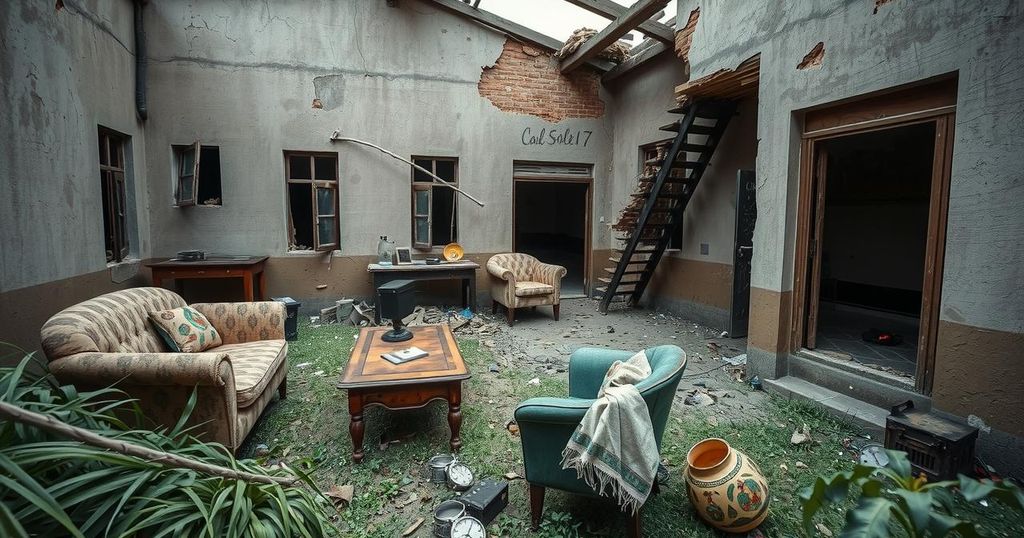Destruction and Resilience: A Journey Through a War-Torn Khartoum

In April 2023, Khartoum was engulfed in war as RSF troops clashed with SAF, resulting in massive destruction and displacement. In the aftermath, many families, including mine, discover their homes ransacked yet find remnants of hope amid the ruins. The spirit of community and memories endure, proving that true belonging is not easily destroyed.
In April of 2023, war erupted in Sudan, transforming Khartoum from a bustling city into an area marked by devastation. At the heart of this turmoil lies the paramilitary group, the Rapid Support Forces (RSF), which seized control amidst clashes with the Sudanese Armed Forces (SAF). With the violence resulting in over 61,000 deaths and countless injuries, the city now stands largely abandoned, with many residents tragically displaced, searching for safety and solace far away from home.
As the RSF retreated from Khartoum, having occupied the city for two years, they left behind a landscape filled with destruction — charred buildings, looted shops, and empty streets that once echoed with life. The iconic skyline now resembles an eerie graveyard of skeletal structures, stripped of their former glory, while the wounds of war are visibly etched on the very fabric of the city’s neighborhoods.
Among those seeking refuge were my parents, caught in the exodus of approximately 13 million who abandoned their homes, presuming peace would soon return. Today, I find myself standing in front of the remains of my childhood home, a site of poignant memories now reduced to rubble. The landscape around the house feels alien; familiar landmarks have vanished, replaced with a haunting emptiness.
As I navigate the overgrown and desiccated pathways leading to my family home, the contrast is stark. Once adorned with life, the garden is now choked by weeds, where trees that were lovingly nurtured by my family have succumbed to neglect. Even the entrance is barricaded by overgrown Bougainvillea, a thorny testament to the abandonment.
Upon closer inspection, the house appears deceptively intact from a distance. However, a closer look reveals cracks running through the walls, likely caused by nearby bomb blasts, exposing the impact of violent confrontations. Stepping inside, the devastation becomes painfully clear. Almost all furniture is gone, with only a few forlorn couches remaining. The once vibrant space feels hollow, stripped of warmth and life — memories reside only in the bare walls that graffiti marks of the RSF have tarnished.
However, amidst the wreckage, glimmers of hope emerge. A weathered family photo album, remnants of my mother’s beloved rocking chair, and certificates of achievements serve as poignant reminders of a life lived here. Each discarded item, though tainted by dirt and damage, signifies resilience — the enduring spirit of a family and community that thrived in this space, characterized by hospitality and unity.
Even as the physical space has been marred, the essence of what a Sudanese home embodies remains untouched. The warmth, laughter, and shared experiences are ingrained in hearts, an indelible mark that no militia can erase. In our hearts and in what remains of Khartoum’s spirit, there lies hope for renewal and reconstruction, a testament to a community that will eventually rise from the ashes.
The devastation in Khartoum, caused by the conflict with the RSF and SAF, has left many families, including my own, grappling with loss and displacement. However, while the physical structures may lie in ruin, the memories and spirit of community endure. As we navigate this aftermath, it is an evident reminder that what constitutes home transcends mere physicality; it resides in shared experiences and hopes for a better future.
Original Source: news.sky.com








